Wonderful World of Women
Throughout history female artists typically have been overshadowed by their male counterparts. While fighting to overcome limited access to formal art training and exclusion from male life drawing classes, women still struggled to gain recognition for their art.
During International Women’s Week in March 2020, we looked to redress this imbalance; creating a pop-up display in our Study Room focusing on women in the arts. This online exhibition expands on this work and highlights several female artists within the Collection.
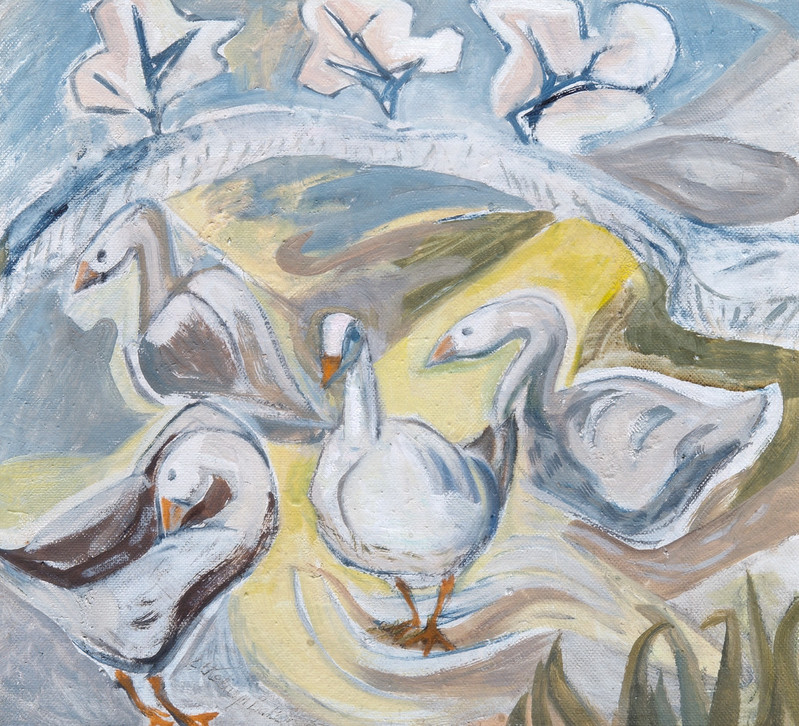
Ethelwyn Baker
Born in Belfast in 1899, Ethelwyn Baker was the daughter of artist Alfred Rawlings Baker. She studied at the Slade School of Fine Art and also attended the Royal Academy Schools from December 1924 to December 1929.
Her main areas of work were sculpture and painting. She worked as a sculptor, model-maker, painter and commercial artist between the 1920s and 1950s, and was the assistant of sculptor Charles Sargeant Jagger in the 1920s and 1930s. Baker also created mannequins used in window displays for Jaeger, Austin Reed, D.H. Evans and Lily & Skinner’s.
Credit line - 'Saffron Walden Pond'. UAC/10131.
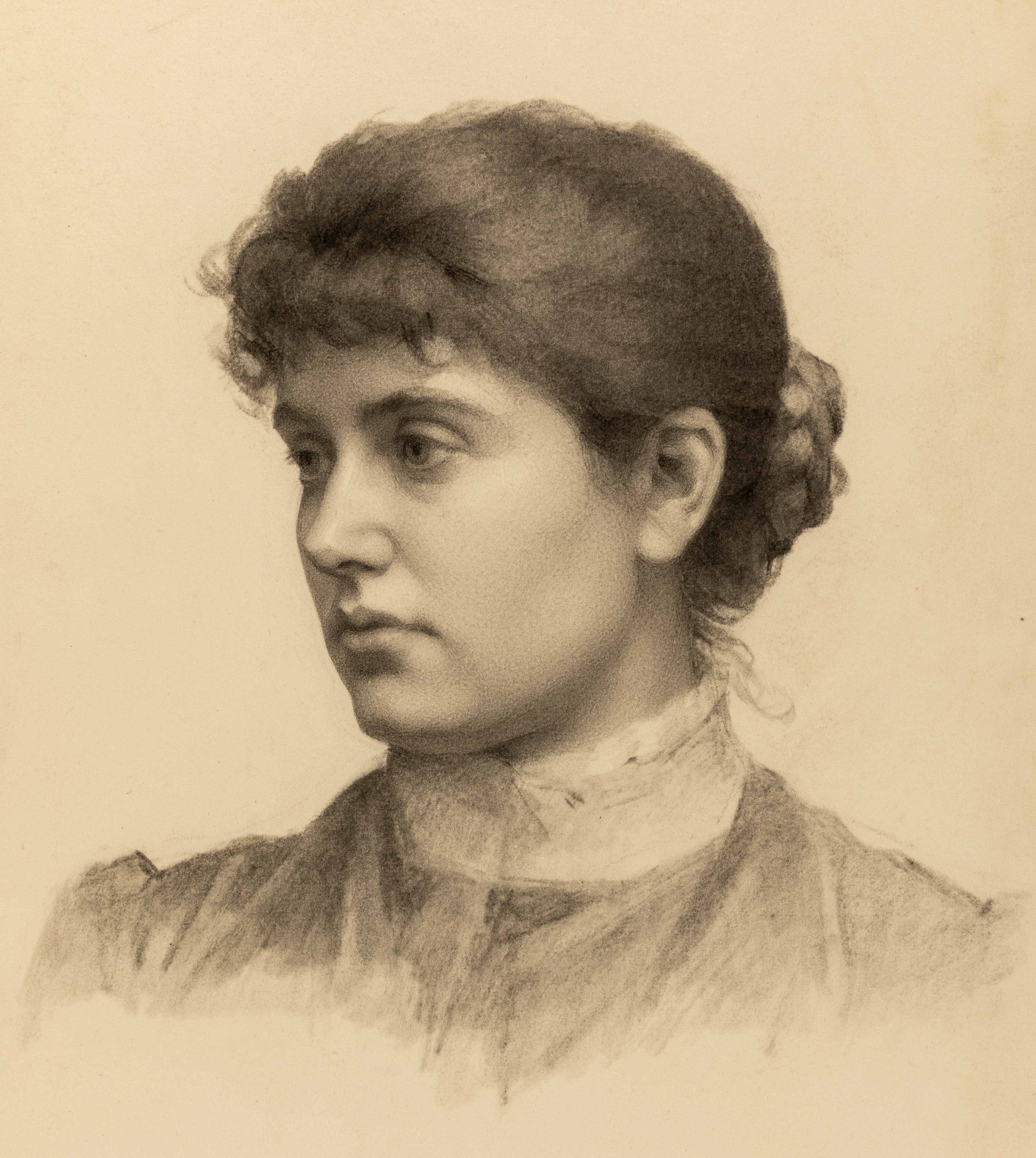
Minnie Jane Hardman
Minnie Hardman (née Shubrook) was a female student at the Royal Academy in the period 1883-1889. The University of Reading owns around 125 original pieces by Hardman that she produced whilst a student and young adult. These include her examinations on perspective, anatomical and life drawings, and examples of her superb sketches of classical sculptures – many of which were awarded prizes by the Academy.
As the Royal Academy did not habitually collect its students’ work, this collection provides an important insight into their teaching practices during this period. It also documents the experience of female students a short time after their admittance into the academy (in 1860), and at a time when they were still taught separately to male students for much of their training.
Credit line - 'Bust-length portrait of a woman'. UAC/10634.

Gwen John
Gwen John was a Welsh painter who worked in France for most of her career. The older sister of Augustus John, her paintings, mainly portraits of anonymous female sitters, are rendered in a range of delicate tones.
Between 1895-1898, John studied at the Slade School, the only art school in the UK at the time which allowed female students to draw from the partially draped male nude. She then briefly studied under James McNeill Whistler at his school, Académie Carmen in Paris. In 1904 after settling in France, she found work modelling for other artists, including the sculptor Auguste Rodin.
Although she was overshadowed by her brother during her lifetime, since the 1960s she has been considered the better artist.
Credit line - 'Standing Female Nude'. UAC/10567.
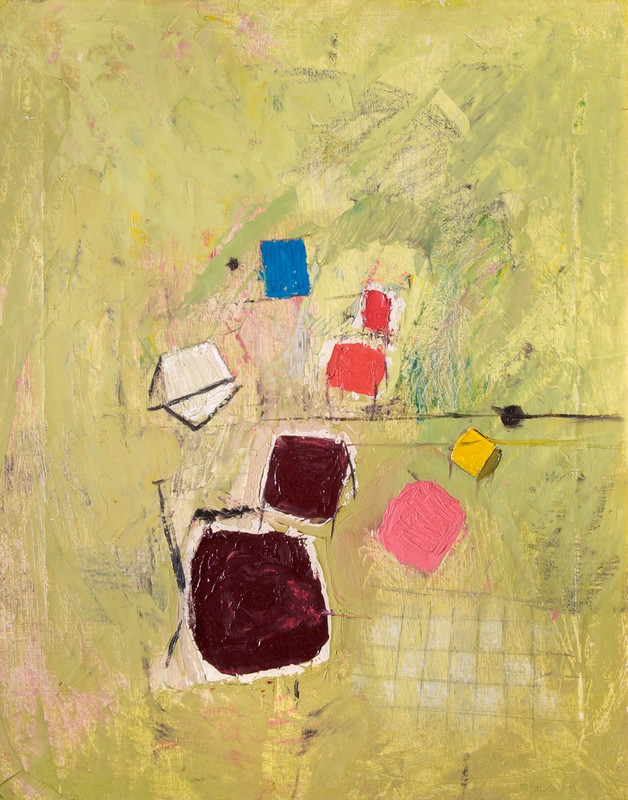
Mary Hoad
Born in Kent, Mary Hoad studied at the Chelsea School of Art. Interested in education, she served on the editorial board of Athene, the journal for the Society for Education in Art, which organized the Pictures for Schools exhibitions.
After working as the County Art Organiser for the Hertfordshire Education Authority, she became the principal of St. Alban’s School of Art (now the Hertfordshire College of Art and Design) in 1957. While principal, she was influential in the promotion of courses on art therapy, introducing pioneer art therapist Michael Edwards to Mary Webb’s work with patients at Kingsbury Hospital.
Credit line - 'Areas of Colour'. UAC/10355.
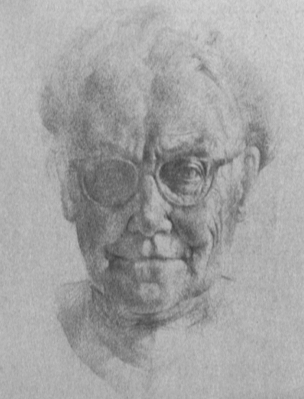
Joy Finzi
Seven portrait drawings by the artist Joy Finzi (1907-1991), wife of the English composer Gerald Finzi (1901-1956) form part of the University’s Finzi Book Room Collection.
The portrait group comprises three studies of the poet, writer and teacher Edmund Blunden (1896-1974), and one each of writer Helen Thomas (1877-1966), writer and poet Sylvia Townsend Warner (1893-1978), poet Valentine Ackland (1906-1969), and artist, writer and poet David Jones (1895-1974).
The drawings were presented to the University by the artist in 1974, along with the literature collection of her husband.
Credit line - 'Helen Thomas in her mid-eighties'. UAC/10243.
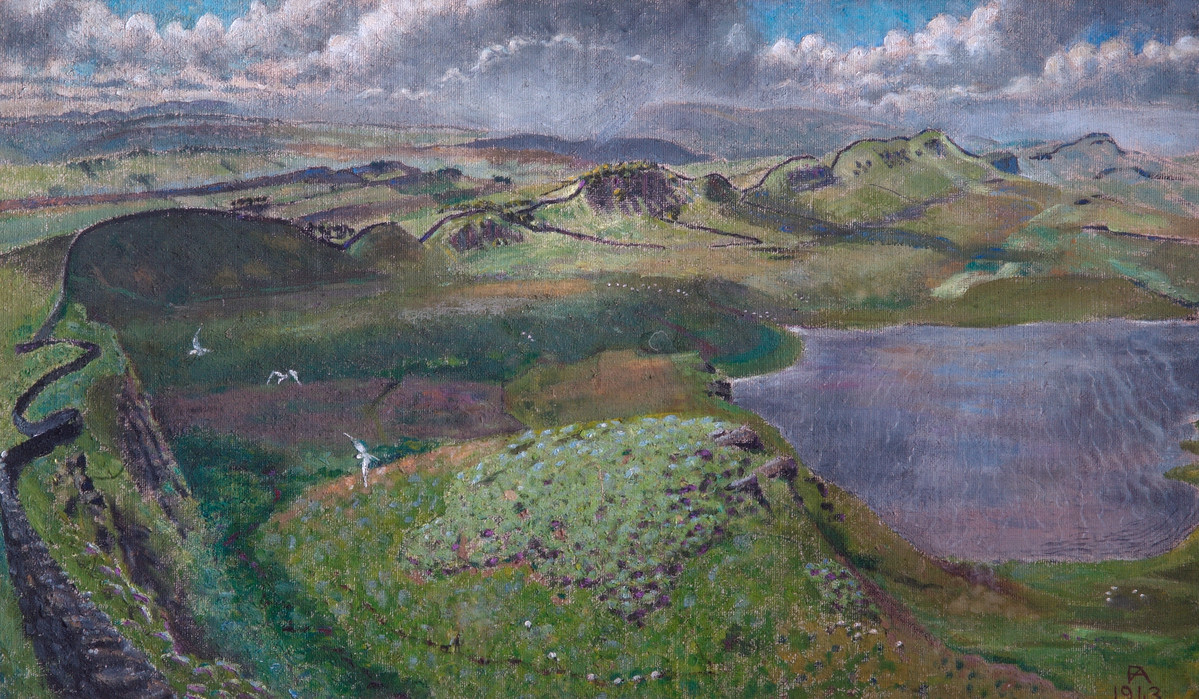
Faith Ashford
Born in 1884, Faith Ashford was a lecturer at the University of Reading’s School of Art, and a founder member of the Reading Guild of Artists.
A poet and artist, Ashford mainly exhibited oil paintings. These were displayed at locations including the Royal Academy and the Wertheim Gallery. Her solo show at the Wertheim Gallery, which is best-known for supporting many well-known 20th century artists, indicates Ashford’s skill.
Credit line - 'Hadrian's Wall'. UAC/10462.
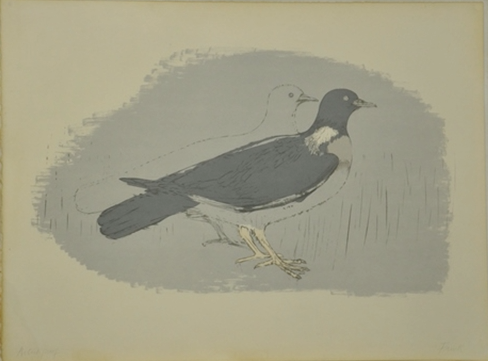
Dame Elisabeth Frink
Best-known as a sculptor, Dame Elisabeth Frink studied at the Guildford School of Art between 1946–1949, and at the Chelsea School of Art from 1949–1953.
Also a prolific print-maker, Frink’s work reflected the same subjects found in her sculptures. These were natural forms, with imagery including men, birds, dogs, cats, and horses.
Wood Pigeons is one of her earlier prints. It was created during the period that she used her skills as a sculptor to first work with lithographic stone.
Credit line - 'Wood Pigeons'. UAC/10340.
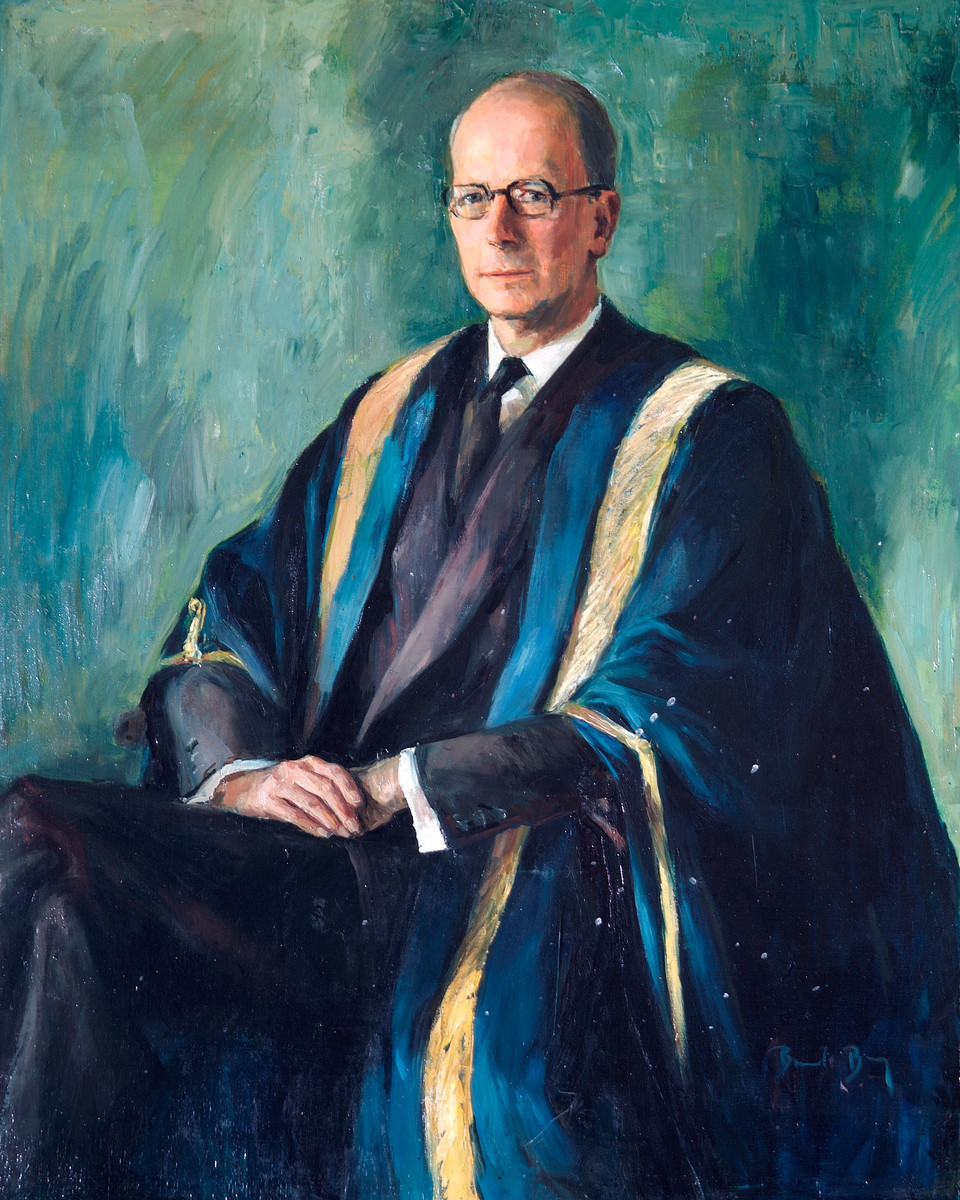
Brenda Bury
A pre-eminent society portrait painter, Brenda Bury began her career at the University of Reading, where she studied Fine Art under Professor J. Anthony Betts.
Now based in Toronto, her sitters have included members of the British Royal Family, the aristocracy, and politicians in the British and Canadian governments.
Credit line - 'Sir John Frederick Wolfenden'. UAC/10062.
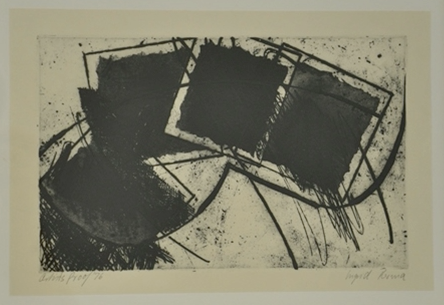
Ingrid Kerma
Born in 1942 near Berlin, Ingrid Kerma studied Fine Art at the University of Reading before gaining a Masters from Goldsmiths College, London University.
She returned to Reading to teach and has also taught at Falmouth School of Art, Central St Martin’s and Middlesex Universities.
Kerma’s practice is focused on the non-representational. She depends principally on colour, line, form and space to create her artworks.
Credit line - Artist's Proof. UAC/10897.